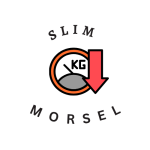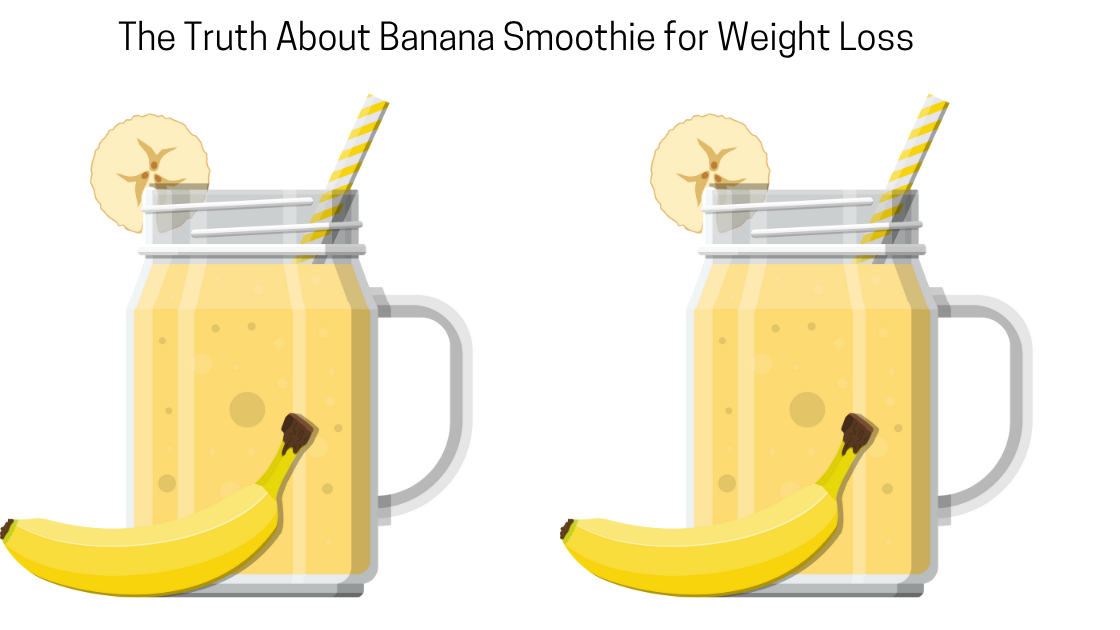Banana smoothies are often hailed as a healthy, filling, and tasty way to lose weight. But how effective are they really?
I decided to put it to the test and drank banana smoothies for two weeks straight. Here’s what happened and what you need to know if you’re considering doing the same.
Why Banana Smoothies Are Popular for Weight Loss
Bananas are naturally sweet, rich in potassium, and pair well with other ingredients, making them a staple in many weight loss smoothies.
They’re filling without being calorie-dense, and they blend smoothly into creamy drinks that feel indulgent.
But here’s where it gets interesting: I tried the banana smoothie for 14 days, and I lost about 10 pounds.
That was the outcome of my personal experiment. Let’s break down why that might happen and whether it’s sustainable.
Nutritional Benefits of Bananas in a Weight Loss Diet
Bananas are rich in:
- Dietary fiber – aids digestion and satiety.
- Potassium – supports heart and muscle function.
- Natural sugars – provide quick energy, which is useful for workouts.
While bananas do have sugar, they’re whole foods, not refined junk. My own recipe was straightforward.
My recipe was simple: I would take two bananas and a cup of milk, blend them, and drink them when I felt hungry.
This simplicity helped me avoid the trap of high-calorie smoothies disguised as “healthy.”
Can Banana Smoothies Replace Meals?
Yes, but with caution. I used the smoothie as a meal replacement. This substituted the meals, but I kept my physical activities the same.
The convenience was a big plus. But there’s a downside: I usually feel hungry 4 hours after eating meat (I like the carnivore diet), but during this experiment, I felt hungry after 1 hour.
Bananas and milk simply don’t offer the protein and fat density of a meat-based meal. When hunger hit hard, sometimes, I would feel so hungry that I had to eat boiled broccoli or eggs to supplement it.
So while a banana smoothie can technically replace a meal, you’ll likely need to supplement it—especially if you’re used to high-protein diets.
How to Make a Low-Calorie Banana Smoothie for Weight Loss
To truly lose weight, your smoothie must stay low in calories. Here’s what worked for me:
Ingredients:
- 2 ripe bananas
- 1 cup skim milk (or unsweetened almond milk)
Instructions:
Blend and drink. That’s it.
You’ll want to avoid adding:
- Honey or syrup (adds unnecessary sugar)
- Full-fat milk or yogurt (adds calories)
- Nut butters (healthy but calorie-dense)
This minimalist recipe worked because it is easy to make very high-calorie smoothies and consume them. The problem is I like my smoothies very liquid-like like so I make it simple.
Expected Results: Weight Loss vs. Energy Loss
Losing weight is often a numbers game: consume fewer calories than you burn. With banana smoothies, it’s very achievable.
I lost about 10 pounds, but I feel like I became weaker physically during this period. This is a common tradeoff when your diet lacks adequate protein or fat. You lose weight, yes, but you may also lose strength or energy.
For me, adding occasional eggs and broccoli helped, but it didn’t fully counterbalance the drop in energy.
Tips to Maximize Results with Banana Smoothies
- Use them as breakfast or lunch, not dinner.
- Combine with light exercise and hydration.
- Add protein (like a scoop of protein powder or Greek yogurt) if you’re doing physical work.
- Monitor hunger. If it spikes, eat low-calorie vegetables or boiled eggs.
- Keep the smoothie simple: banana, milk, maybe cinnamon or flaxseed.
FAQ: Banana Smoothie for Weight Loss
Is a banana smoothie good for weight loss?
Yes, a banana smoothie can be good for weight loss when made with low-calorie, nutrient-dense ingredients.
Bananas are naturally filling and rich in fiber and potassium, which help with digestion and appetite control.
The key is to avoid calorie-heavy add-ins like sugar, peanut butter, or full-fat dairy. As I learned firsthand, I tried the banana smoothie for 14 days, and I lost about 10 pounds. Simplicity and portion control are crucial.
How to make a banana smoothie for belly fat?
While no food can target belly fat directly, a low-calorie banana smoothie can support overall fat loss, including around the belly. A belly-fat-friendly version might look like this:
Ingredients:
- 1 ripe banana
- 1 cup unsweetened almond milk
- 1 tbsp chia seeds (for fiber)
- A pinch of cinnamon (supports blood sugar regulation)
Blend and drink as a breakfast or light meal. I used a simpler version during my experiment: My recipe was simple; I would take two bananas and a cup of milk, blend them, and drink them when I felt hungry.
What is the morning banana trick for weight loss?
The “morning banana trick” is a popular concept that suggests starting your day with only bananas and water. The theory is that bananas kickstart your metabolism while keeping you full.
While there’s limited scientific backing, it can be a good low-calorie start to the day, especially if you’re not a big breakfast eater.
I found smoothies effective in the morning as they kept me light and energized, though I was feeling hungry after one hour, compared to my usual meat-heavy meals.
What is the 30/30/30 rule for weight loss?
The 30/30/30 rule is a weight loss method that suggests:
- Eating 30 grams of protein within 30 minutes of waking up
- Then doing 30 minutes of low-intensity exercise
This method focuses on stabilizing blood sugar, boosting metabolism, and reducing cravings throughout the day.
If you’re using banana smoothies in the morning, make sure to add protein, like Greek yogurt or a scoop of protein powder to meet the 30g protein target.
Without it, you might experience what I did: I feel like I become weaker physically during this period.
Final Thoughts: Is It Worth Trying?
Absolutely, if done right. The banana smoothie worked for me as a short-term solution. I tried the banana smoothie for 14 days, and I lost about 10 pounds. But long-term, I wouldn’t use it as a sole meal replacement unless it’s nutritionally balanced.
The biggest takeaway? Simplicity works. But be mindful of hunger, fatigue, and the potential nutritional gaps that can come from liquid dieting.

